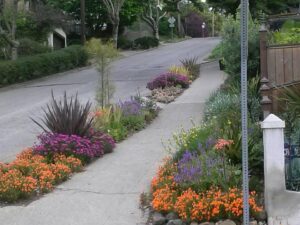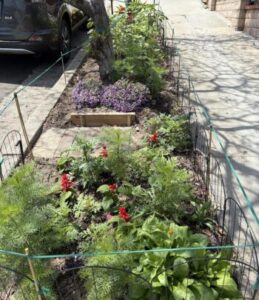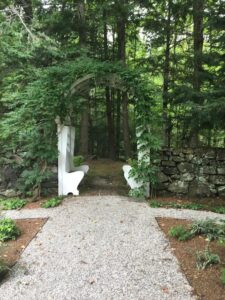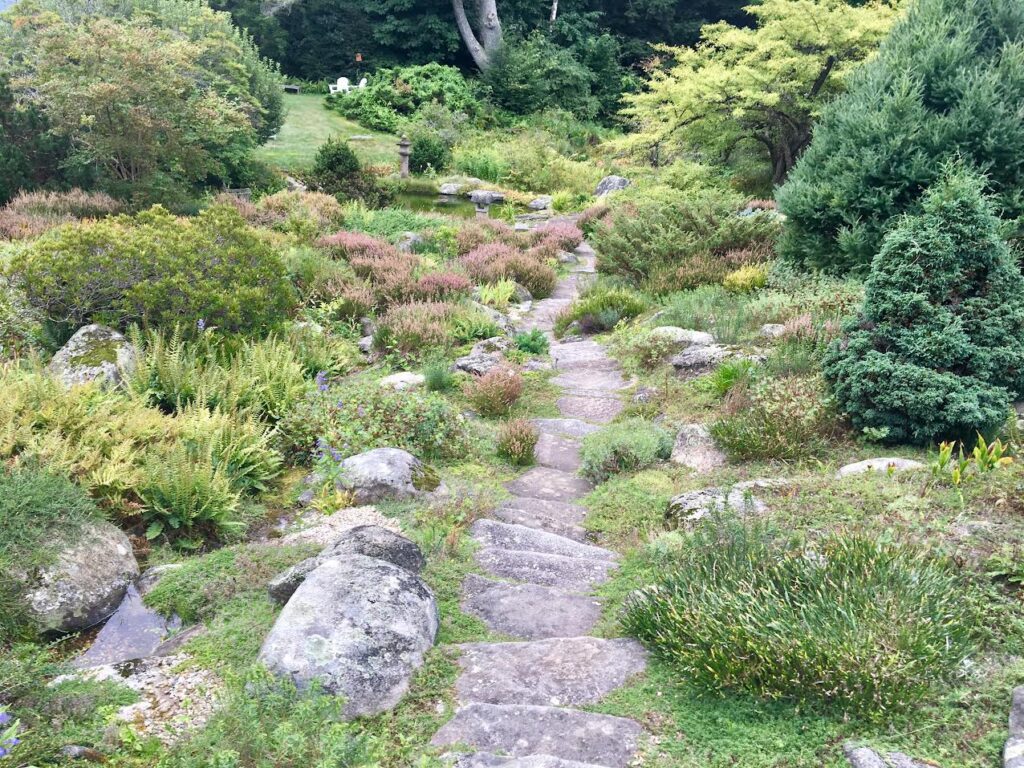
This gorgeous rockery is in The Fells, an old estate in Newbury, New Hampshire. A past owner and garden hobbyist created this extensive rockery placing each stone with care and choosing the plant varieties to fit the climate and hillside location. Many of the dwarf conifers are rare hybrids and the blooming shrubs shown are heather. This garden has the largest and most elaborately conceived rockery that I have seen. As you can see it is very well established and has a pond on the mid level terrace on the hillside.


Touring the garden on a foggy morning felt like being transported to the Scottish Highlands or the very old gardens in Britain. This rockery has a lovely mixture of texture and leaf colors set against the granite boulders from the region. In California I didn’t have a lot of luck with dwarf conifers. Its too hot and dry for them. I used some Mugo Pine and the occasional dwarf Japanese garden juniper but never was able to explore the many varieties of pine, spruce, fir, and cedar that are in the garden here. The ferns in the garden love the wet climate of New Hampshire and naturalize easily. The heather likes the acid soil and quick drainage of the slope.
Rockeries can have many types of planting themes used in them. The most common in California are the succulent rockeries. There are even cliff side natural rockeries common in seaside areas with native succulents and perennials. Succulents are useful because they will root into the smallest amount of soil, can dry out between rains and foggy days, and hug the slopes or cliffs avoiding wind damage.
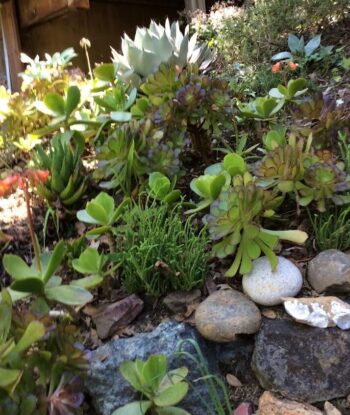
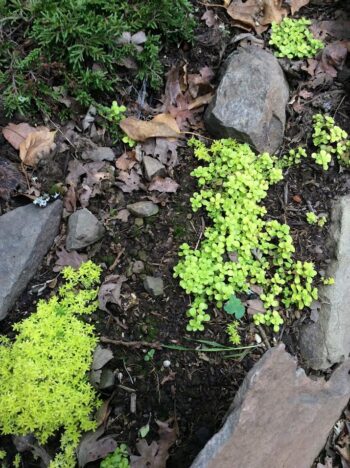
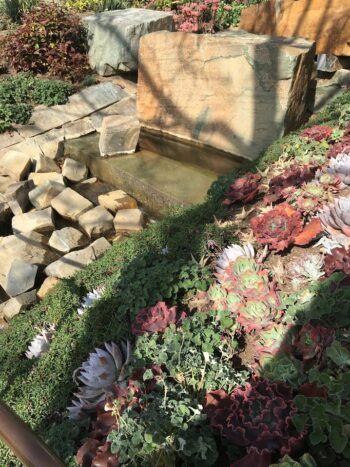
Here are a few good selections for rockery areas with succulents- Echeveria, sedums, Aeoniums, artichoke agave and crassula macrocarpa. The plants should be small enough hybrids they don’t overwhelm the space.
These are some projects (photos below) I did on our property in Marin County, CA. The site had the worst soil possible, lots of sloping areas and even some sheer drop areas along walkways. Some of the spots bottomed out over bedrock making growing things very difficult. Add to these factors the hot dry summers, ravenous Deer and lots of tree roots- it was a challenge. So I did some small rockeries utilizing some water washed cobbles a friend gave me, branches from the site and wood and metal stakes. Succulents, bulbs and ornamental grasses were planted in small pockets that I created by using the stones and branches. I amended the soil and fertilized regularly so that plants could root in. I figured that by the time the branches rotted out the plants would have their roots well established and would hold the hill well.
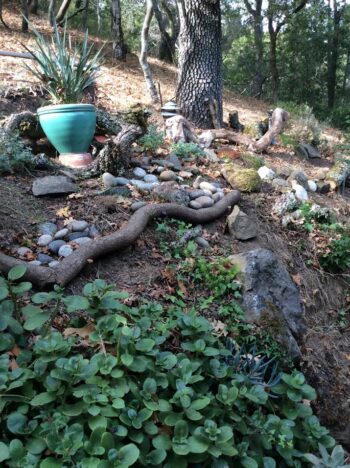
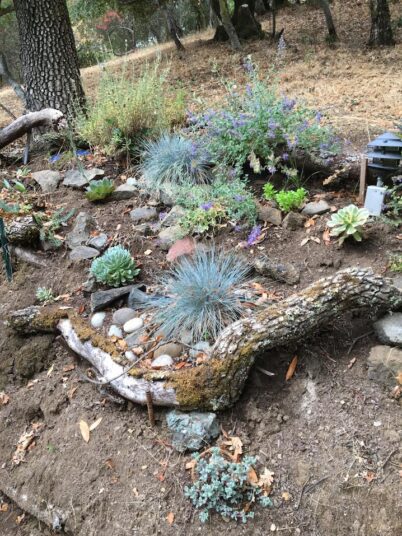
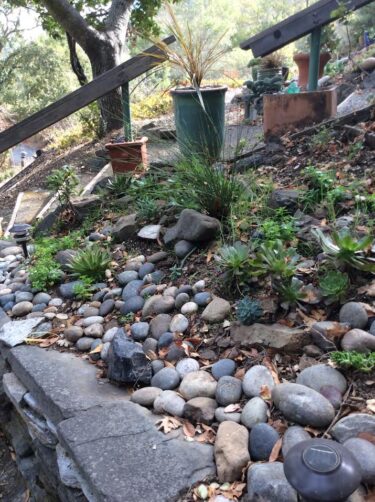
The photos show the areas right after planting and they filled in nicely over time. Where the soil was too thin to plant or there was just bedrock, I added potted plants to give some height and interest. The pots can be refreshed with new plants as needed. I wanted to show you these projects as an example of small space rockeries in harsh conditions. Lots of gardens have areas that are challenging to garden in and a rockery can be the solution.
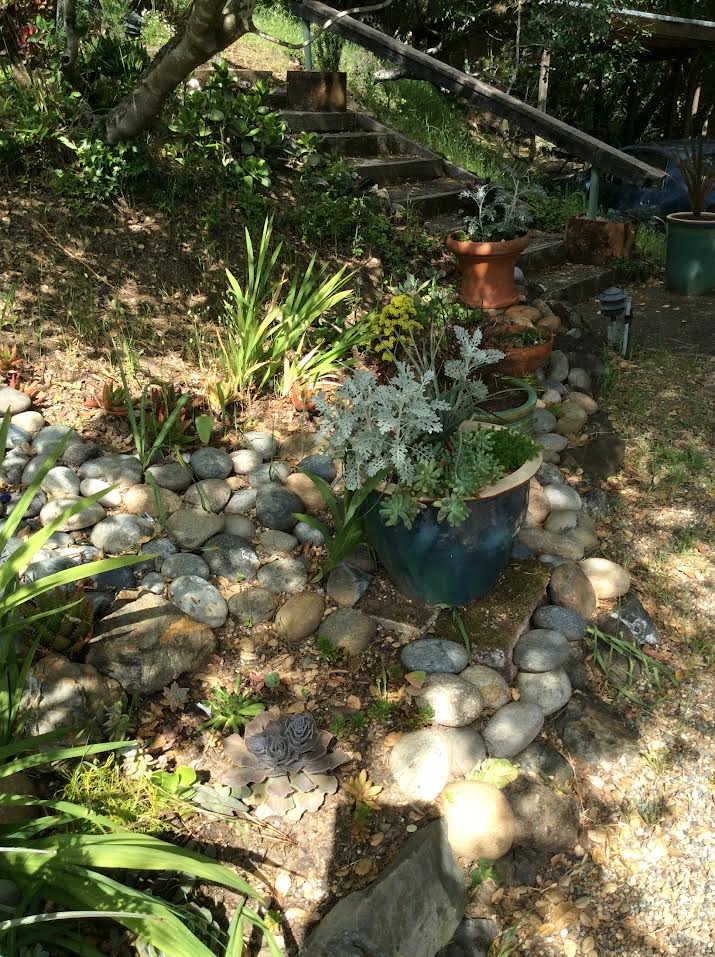
I used the cobbles to make a faux waterfall area on the slope but lots of rockeries include a flowing water feature or waterfall area.
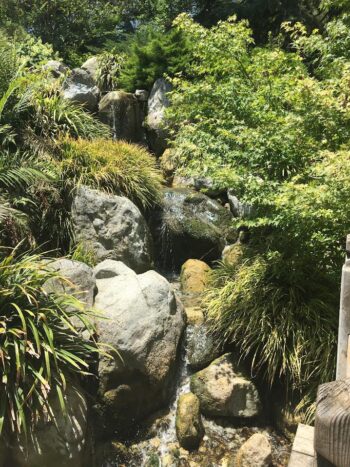
Huntington also has this xeriscape area with a nice arrangement of bluff sandstone, 1″ stones, cycads and succulents.
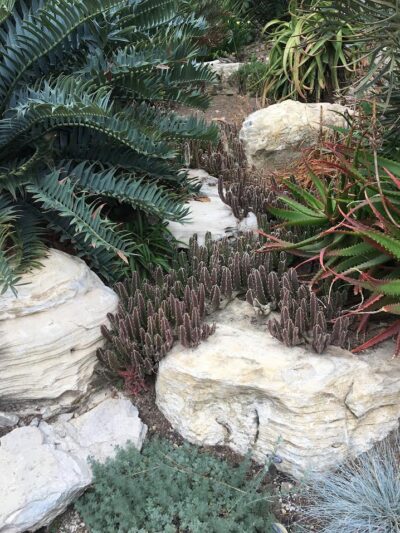
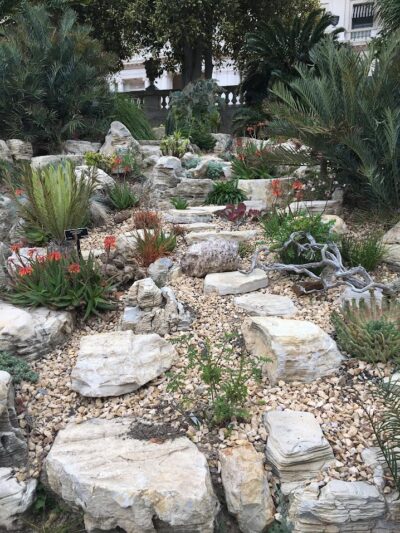
I don’t usually like taffy rock (the stones shown between the small boulders) but it works here.
I found these miniature rockeries in an old estate garden in Burlington, Maine that are very fun. Easy to make too. It looks like those containers are degraded limestone and may be very old. The estate borders Lake Champlain and the stones are from the lake shore. They used tulbaghia, lewisia and seaside daisies as the rockery plants. The plantings with stones have a Bonsai feel but they have more stones included than most Bonsai.
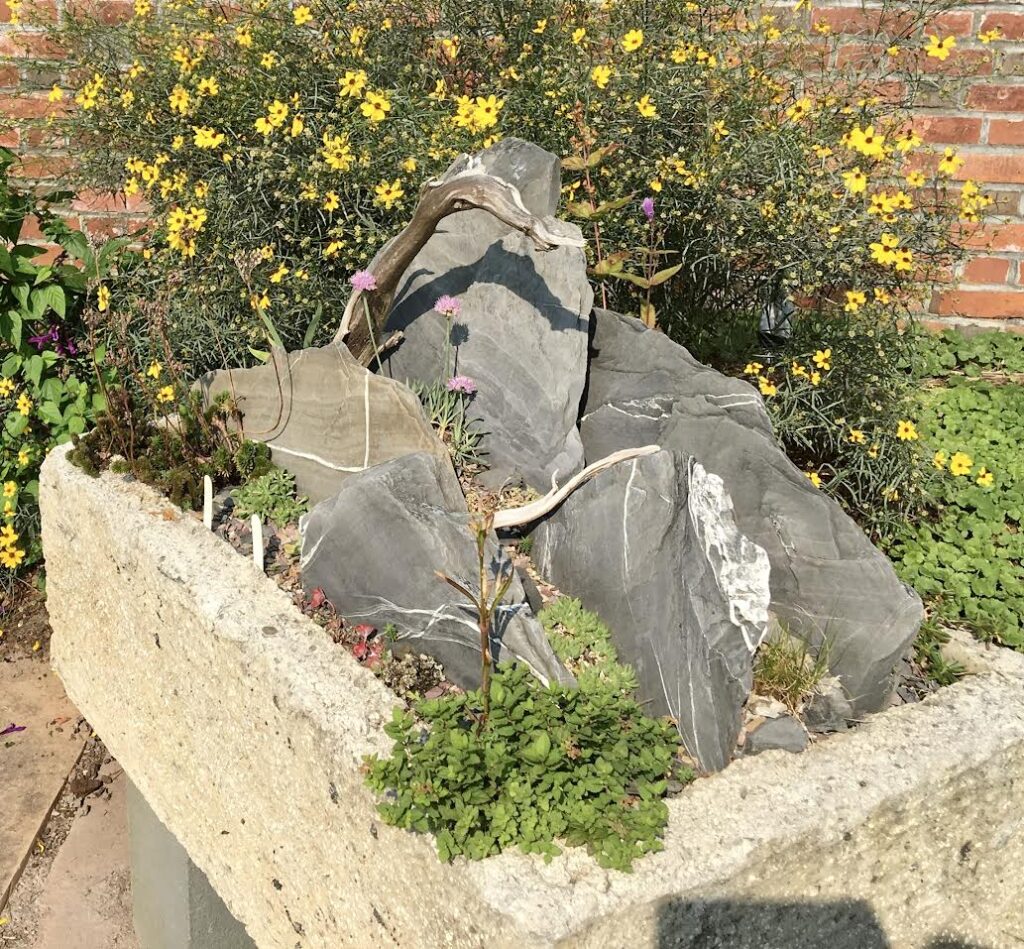
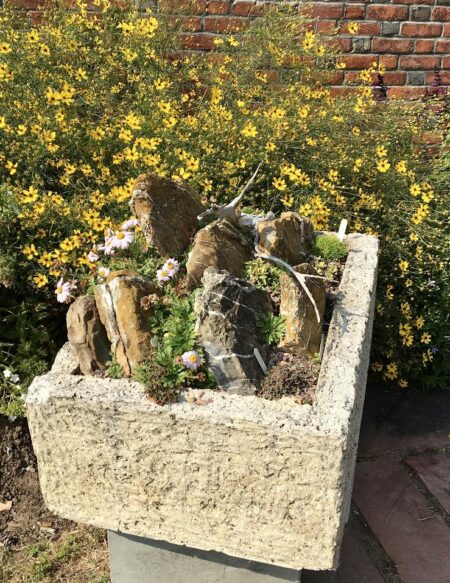
The traditional form of a rockery was planted with alpine plants and miniature bulbs. This proved to be a very difficult gardening project for most home gardeners with no specialized knowledge. The examples I showed here have ideas and plants that are accessible and fairly easy to care for.
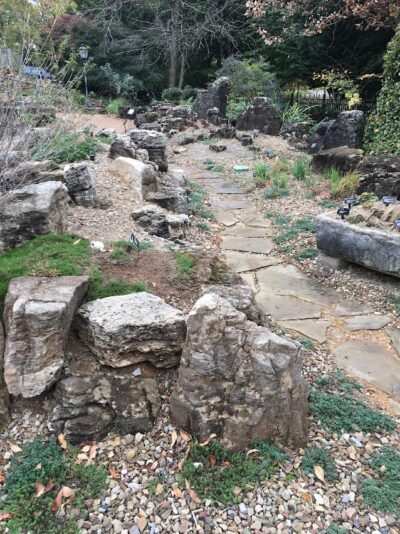
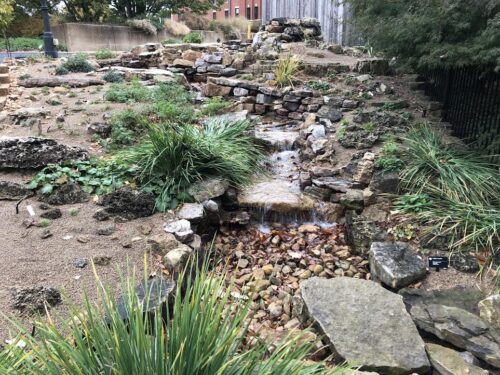
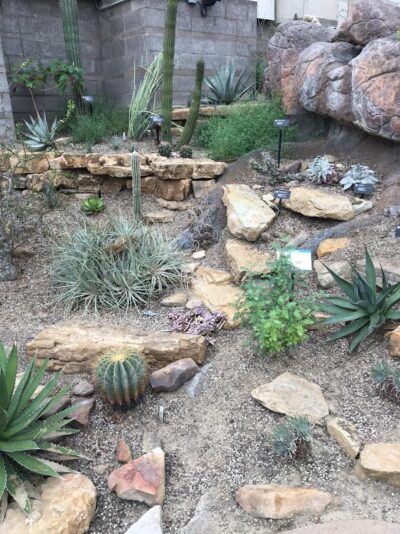
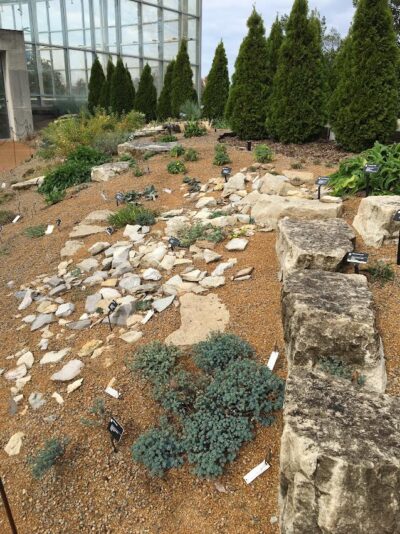
These are some good examples of rockeries that I saw at the Missouri Botanical Gardens. You will see a lot of labeling in the pictures since it is a public garden.
Check out the website course page for information on my landscape design course and Green Speak Travelogue. Both courses contain information on ways to improve your garden and DYI projects that can make your outdoor space more useful and inviting. The Travelogue has tons of beautiful pictures of botanical gardens in the U.S. and abroad. I keep adding more all the time!

